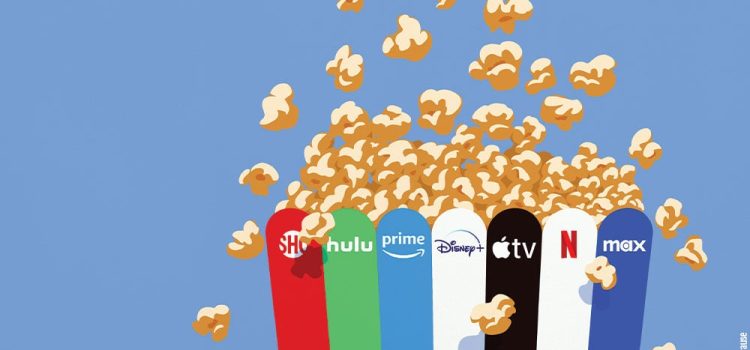
Introduction
The advent of streaming services has revolutionized the entertainment industry, and its impact on the film festival circuit is no exception. Traditionally, film festivals have been a cornerstone of the cinematic world, offering filmmakers a platform to showcase their work, network with industry professionals, and gain critical acclaim. However, the rise of streaming services has introduced new dynamics that are reshaping the landscape of these festivals. This article delves into how streaming services are influencing film festivals, exploring both the opportunities and challenges that come with this transformation.
The Traditional Role of Film Festivals

1. Historical Context
Film festivals have a rich history dating back to the early 20th century. Events like the Venice Film Festival, Cannes Film Festival, and Sundance Film Festival have long been prestigious venues where filmmakers debut their latest works. These festivals have traditionally served multiple purposes:
- Showcasing Talent: Providing a platform for emerging and established filmmakers.
- Networking Opportunities: Facilitating connections between filmmakers, producers, and distributors.
- Critical Acclaim: Offering a stage for films to gain critical reviews and awards, which can significantly impact their commercial success.
2. Economic Impact
Film festivals also have a significant economic impact on their host cities, attracting tourists, generating revenue, and creating jobs. The traditional model has relied heavily on physical attendance, with screenings, panels, and parties being integral components of the festival experience.
The Rise of Streaming Services

1. Market Disruption
Streaming services like Netflix, Amazon Prime Video, and Hulu have disrupted the traditional film distribution model. These platforms offer a vast library of films and TV shows accessible from the comfort of one’s home. The convenience and affordability of streaming services have made them immensely popular, leading to a decline in traditional cinema attendance.
2. Original Content Production
Streaming giants have also ventured into producing original content, often with substantial budgets. Films like “Roma” (Netflix) and “Manchester by the Sea” (Amazon Prime Video) have not only garnered critical acclaim but also won prestigious awards, challenging the dominance of traditional studios.
Impact on Film Festivals

1. Increased Accessibility
One of the most significant impacts of streaming services on film festivals is increased accessibility. Virtual screenings have become more common, allowing audiences from around the world to participate in festivals they might not have been able to attend physically. This democratization of access has broadened the audience base and increased the visibility of films.
2. Hybrid Models
Many film festivals have adopted hybrid models, combining in person and virtual events. This approach offers the best of both worlds, retaining the traditional festival atmosphere while leveraging the reach of digital platforms. For instance, the Tribeca Film Festival and Toronto International Film Festival have successfully implemented hybrid models, attracting a global audience.
3. Distribution Deals
Streaming services have become significant players in acquiring films at festivals. Filmmakers now have the option to sell their films to streaming platforms, often securing lucrative deals. This trend has shifted the power dynamics, with streaming services becoming key stakeholders in the festival circuit.
4. Impact on Independent Filmmakers
For independent filmmakers, streaming services offer an alternative distribution channel, bypassing traditional gatekeepers. This increased access to distribution can be a double edged sword. While it provides opportunities for wider reach and financial gain, it also means competing in a crowded digital marketplace.
Challenges and Concerns

1. Quality vs. Quantity
One concern is the potential dilution of quality due to the sheer volume of content on streaming platforms. With thousands of films available, it can be challenging for high quality independent films to stand out. Film festivals have traditionally been curators of quality, and maintaining this role in the digital age is a significant challenge.
2. Financial Sustainability
The shift to virtual and hybrid models has financial implications for film festivals. Revenue from ticket sales, sponsorships, and merchandise may be affected, and festivals must find new ways to monetize their offerings. Additionally, the cost of digital infrastructure and cybersecurity measures adds to the financial burden.
3. Audience Engagement
Maintaining audience engagement in a virtual environment is another challenge. The communal experience of watching a film in a theater, followed by discussions and networking, is hard to replicate online. Festivals must innovate to create interactive and engaging virtual experiences.
Future Prospects
1. Technological Innovations
Advancements in technology, such as virtual reality (VR) and augmented reality (AR), offer exciting possibilities for film festivals. These technologies can enhance the virtual festival experience, providing immersive and interactive elements that mimic the physical event.
2. Collaboration and Partnerships
Collaboration between film festivals and streaming services can be mutually beneficial. Festivals can leverage the reach and resources of streaming platforms, while streaming services can gain access to exclusive content and festival branding. Strategic partnerships can help both parties navigate the evolving landscape.
3. Continued Evolution
The film festival circuit is likely to continue evolving in response to the growing influence of streaming services. Flexibility and adaptability will be crucial for festivals to remain relevant and successful. Embracing digital transformation while preserving the essence of the festival experience will be key to their future.
Conclusion
Streaming services have undeniably reshaped the film festival circuit, introducing new opportunities and challenges. Increased accessibility, hybrid models, and alternative distribution channels have broadened the reach and impact of film festivals. However, maintaining quality, financial sustainability, and audience engagement remains a challenge. The future of film festivals lies in embracing technological innovations, fostering collaborations, and evolving to meet the demands of the digital age. As the landscape continues to shift, film festivals will need to balance tradition and innovation to thrive in this new era.









